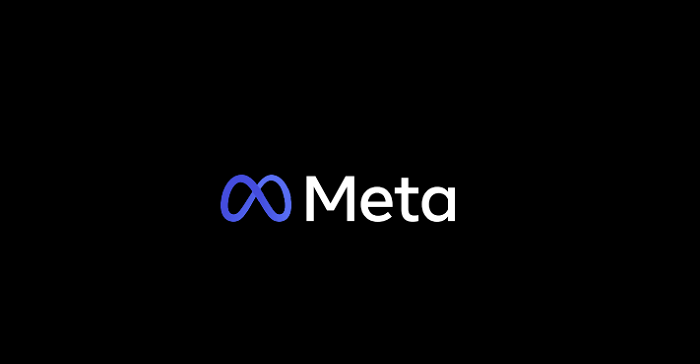SOCIAL
Meta Outlines Key Areas of Focus, and Business Opportunity, Following Downbeat Earnings Report

After a disastrous earnings report, in which Meta informed the market that its net income was at its lowest levels since 2019 in the most recent quarter, largely due to ongoing, and rising investment in its metaverse vision, Meta has sought to reassure investors that it has a plan to get its financial performance back on track, despite rising challenges in the digital ads space.
In the accompanying earnings call, Meta CEO Mark Zuckerberg outlined the company’s four key areas of focus moving forward.
Those are:
- Improving its AI discovery tools to maximize engagement in its apps
- Adding new business messaging features to monetize the user shift towards messaging, and away from social apps
- Re-building its ad tools to reduce reliance on user data
- Continued development of AR, VR and the metaverse, with a focus on the future
Here’s a look at how Meta is planning to tackle each:
Improving its AI discovery tools
The first point has already proven contentious, with users pushing back against Meta increasingly looking to pump more content from profiles that you don’t follow into news feeds.
This approach, which was guided by TikTok, aims to maximize the value of the content available in each app, by highlighting the best, most engaging posts, regardless of who posted them, to more users. In the past, both apps have pushed users to curate their own streams, based on their interests, but now, Meta’s confident that its AI tools will be able to show you more of what you like in its apps, even if you don’t know that it exists.
And in variance to TikTok, Meta says that it can actually provide a better experience on this front, because it can also apply its AI content matching across a wider range of content types, including photos, text, links, communities, and all kinds of videos.
“We can also mix this content alongside posts from your family and friends, which can’t be generated by AI alone.”
The assumption here is that users actually want all of these different types of content on a single platform, as opposed to TikTok, where you just get a constant stream of video clips. Whether that’s true or not is unclear, but TikTok continues to engage more users for longer, so it doesn’t seem to be a problem impeding its growth.
Which, in turn, may mean that it’s not a competitive advantage for Meta either.
Either way, the amount of AI-recommended content is only going to increase in Meta’s apps.
Back in July, Zuckerberg noted that:
“Right now, about 15% of content in a person’s Facebook feed and a little more than that of their Instagram feed is recommended by our AI from people, groups, or accounts that you don’t follow. We expect these numbers to more than double by the end of next year.”
Shortly after Zuckerberg said this, Instagram announced that it was scaling back its AI recommendations due to negative feedback, but over time, you can indeed expect Meta to show you more and more stuff, from all different types of users and profiles – whether you’ve chosen to see it or not.
Which is a big shift, especially given Meta’s past insistence that it needs an algorithm to sort through all the posts it could show you, because people simply follow too many people and Pages to show you everything from all of them, every day.
Now, it seems, the opposite is true. Which leads into the second element.
Monetizing the user shift towards messaging
More people are now sharing more content with smaller groups of people in their DMs, as opposed to posting public updates to Facebook or Instagram.
This shift is actually present across all social apps, with a new report published this week also showing that usage among Twitter’s most active users has been in steady decline since the beginning of the pandemic.
The reasons for this are varied. One contention is that, due to the ongoing polarizing impacts of political commentary on social networks, mare users are now increasingly inclined to keep their opinions to themselves, or to share them with a smaller group of trusted friends, rather than broadcasting them for everyone to see, criticize and attack them over.
Meta highlighted this as a key concern among its users last year, with Zuckerberg noting:
“One of the top pieces of feedback we’re hearing from our community right now is that people don’t want politics and fighting to take over their experience on our services.”
There have also been various high-profile cases of celebrities being brought down when their past, offensive tweets have been uncovered, while the shift towards more entertaining content – again driven by TikTok – has also made regular updates feel more stale and less engaging.
The result, then, is that people just aren’t posting as many feed updates as they once did. And with that, Meta’s looking to tap into the resulting growth in messaging as a potential revenue opportunity.
Even though it’s never been able to effectively monetize messaging in the past.
But it, possibly, has a plan:
“As more social interactions move to messaging, we’re developing a flywheel between discovery and messaging that will make all these apps stronger. On Instagram alone, people already reshare Reels nearly 1 billion times daily through DMs.”
Meta’s also working to monetize WhatsApp, with Zuckerberg specifically noting that ‘paid messaging is going to be ‘a big opportunity’ moving forward.
On this front, Meta points to opportunities like:
- Click-to-Messaging ads, which let businesses run ads on Facebook and Instagram that start a thread on Messenger, WhatsApp or Instagram Direct so they can communicate with customers directly. This is one of our fastest growing ads products, with a $9 billion annual run rate.
- Click-to-WhatsApp also just passed a $1.5 billion run rate, growing more than 80% year-over-year.
Whether Meta is able to effectively monetize messaging is a big question, but you can expect it to keep highlighting the potential tapping into the growth of messaging as a means to maximize your marketing and brand-building efforts.
I remain unconvinced that users are super keen to message with businesses, but there may be new ways for Meta to tap into this shift.
Re-building its ad tools to reduce reliance on user data
Meta’s also losing out on ad dollars due to Apple’s iOS 14 privacy updates, which got even worse this week when Apple announced a new App Store tariff on post ‘boosting’ on social platforms.
In response to this, Meta’s looking to improve its AI and machine learning solutions to better automate ad targeting, based on the insights that it can use, as opposed to leaving it up to advertisers to select specific audience subsets which may not be as effective.
This is a tough sell, because for years, Meta has touted its unmatched audience insights as a means to hone in your ad targeting, and reach just the right audiences with your promotions. Now, it’s saying that you should trust its AI black box to display your ads to the right people, even if you have no idea who they are.
Meta’s main solution on this front is its Advantage+ ad suite, which cuts out all of the targeting, and just asks advertisers to set a budget, a date range, and to upload their creative – Meta’s system will do the rest.
Which many will feel uncertain about – but Meta says that its systems are producing results:
“Recent testing found that advertisers using Advantage+ shopping campaigns saw a 17% improvement in their Cost Per Acquisition and 32% increase in Return on Ad Spend.”
Meta’s continuing to evolve its tools, and it may well be that its systems do end up producing better response rates than your own targeting would. It puts a lot of trust in Meta’s systems, but if it works…
Eventually, you may not need to do much manual work on your Facebook and IG ads at all, just upload your creative, set a budget, and let the system do the rest.
And then, finally, there’s the metaverse, and the theoretical opportunities of the theoretical VR wondersphere, where anything and everything will be possible.
Eventually.
I have no doubt that the metaverse will become a thing, and that these more immersive experiences will grow into more habitual, transformational trends at some stage. I’m just not sure when that will be. Meta says that it’s a decade out, and it may be even more than that, while various other non-Meta execs say it’s a path to failure, littered with health impacts, dangers, regulatory concerns, etc.
Either way you look at it, the metaverse is not close, with widespread adoption of VR headsets, or potentially AR glasses, being the first big step that needs to happen before you even need to consider what the opportunities might be here.
But Meta remains confident that it will be a thing, and over time, we’ll see what sort of applications and tools emerge in VR that draw people into the experience.
When you see those trends shift, you’ll need to pay attention – but till that happens, it’s largely academic. And if any advisers are telling you that you need a metaverse strategy, I’d probably be assessing how much money they stand to make from such, in variance to the potential value for your business.

















You must be logged in to post a comment Login